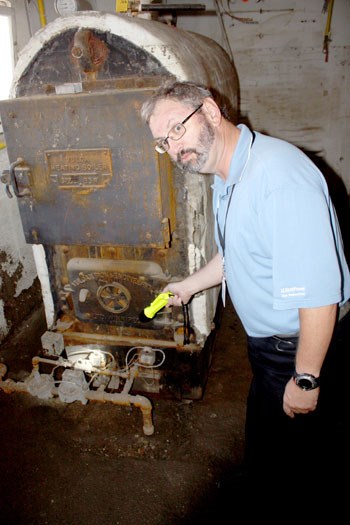While the city is cleaning up after the flood, one of the concerns for many of the affected homes is what to do about electrical and gas utilities. With water damage that much of the equipment has sustained, SaskPower and SaskEnergy are recommending people consider whether their electric and gas equipment need replacement.
Dean Schill, Electrical Inspector for SaskPower, says that the main issue with electrical components which have been submerged in the flood. While components might appear to work properly, the moisture causes corrosion.
The problem with the corrosion is that it is something which cannot be seen, as it happens within the switches, wires and connections. Schill says that the only option is to completely replace the components.
"Once the water has reached the level of your panel box, for example, it either needs to be cleaned, with all the breakers removed, destroyed and replaced, or what generally happens which is a new panel box being installed. At that time, if the panel box needs to be replaced, then the entire service needs to be changed to today's code standards," Schill says.
While components might look safe and function, Schill points out that it is corrosion within the box which can be dangerous."What happens is that you can wipe them off on the outside and they look like brand new, but on the inside they start to corrode. They will stay on and you will have power, but what happens is that they may not function in a fault situation," Schill says.
The danger with corroded breakers is that if there is a short, the breaker will not trip and shut off, preventing damage.
In a tour of a home on Brodie Ave., Schill showed how water could get into every corner of a switch, with mud and water filling the devices. Schill notes that this is why it is important to replaced water damaged electrical equipment, since the water can get into every area.
For homes to be reconnected, Schill says that they need to be inspected and made safe by a licensed electrical contractor.
Doug Hird, Senior Engineer, Gas Codes and Standards for SaskPower, says that corrosion is also the problem with gas delivery components. As the pieces corrode, they could cease to function properly, and no longer open and close as demanded. For an example, Hird showed the control parts for a boiler in an apartment building on Assiniboia Ave. The parts, which were completely submerged, could fail, which would lead to the boiler either overheating or not functioning at all, depending on which way the valve was stuck.
Another serious concern from a heating standpoint is ductwork. With the quantity of water and sewage which passed through submerged home, bacteria could easily find its way into the ducting. Hird notes that ducts have to either be cleaned or replaced to ensure the safety of people in the home.
When equipment is submerged, Hird says that it is no longer certified for use, and a licensed inspector needs to examine the equipment to ensure that it can still be used or, in a more likely scenario, needs to be replaced outright. Gas service will not be restored to a building with uncertified equipment, for safety reasons.
"Just like electrical equipment, if it's uncertified it's unreliable and unpredictable. If it is certified, it is reliable, and predictable," Hird says.
Similar to electrical service, a licensed gas contractor needs to examine the house and bring it up to standards in order to safely restore the service.
Schill says that while getting power restored can be an inconvenience, he believes that preventing injury from damage is more important, and he is proud to note that there have been no reported injuries due to electricity during the flood.
"I'd like to give credit to a lot of the local electricians who work in the area. We worked all day Friday until three in the morning bringing houses back on, and then we worked for the next three weeks without a break... Our concern throughout the whole thing was safety, and if we felt it wasn't safe we weren't going to take any chances... I'm impressed with the dedication from both the electrical contractors and our staff, putting in the hours to get all of that stuff back on," Schill says.




